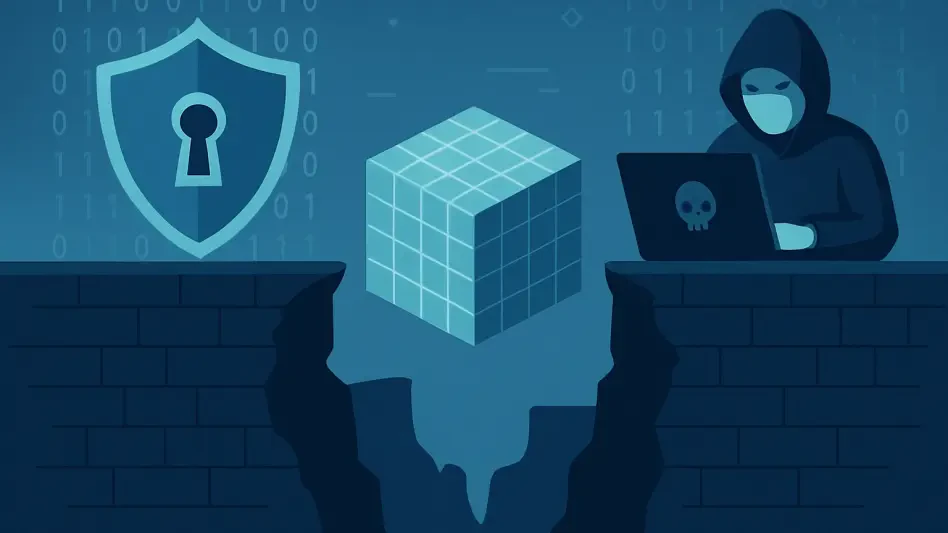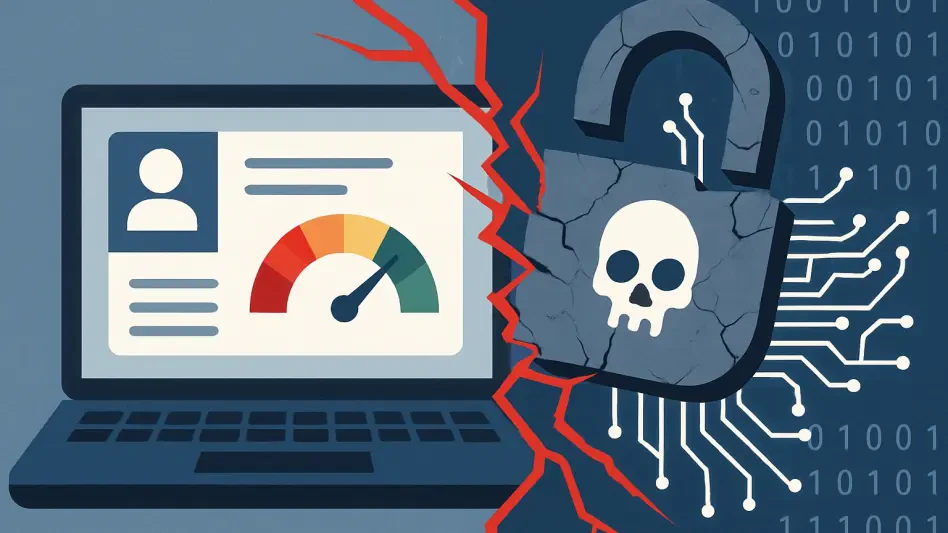What happens when the very data meant to protect organizations from cyber threats becomes a liability? In an age where breaches can cost billions and artificial intelligence (AI) promises to revolutionize defense mechanisms, a staggering disconnect exists between perceived security and actual trust in data. A recent survey of 500 U.S. IT and security professionals reveals that while 90% feel confident in handling vulnerabilities, only 25% trust the data driving their decisions. This hidden fracture in trust threatens not just cybersecurity readiness but also the adoption of transformative technologies, setting the stage for a critical examination of how data reliability shapes the future of digital defense.
The importance of this issue cannot be overstated. Cybersecurity is no longer just a technical challenge; it’s a cornerstone of business continuity and innovation. With cyber-attacks growing in sophistication, the gap between perceived preparedness and actual data reliability exposes organizations to unprecedented risks. Beyond immediate threats, this trust deficit stalls progress in leveraging AI for faster, smarter responses. Understanding and addressing this gap is essential for any organization aiming to stay ahead in a landscape where a single breach can unravel years of trust and investment.
Why Trust in Data Is a Make-or-Break Factor
Data serves as the foundation for every cybersecurity decision, from identifying vulnerabilities to deploying patches. Yet, beneath the surface of reported confidence lies a troubling statistic: a mere 25% of surveyed IT and security leaders have faith in the information their tools rely on. This discrepancy signals a systemic issue, where tools and strategies, no matter how advanced, falter without a bedrock of reliable data. The implications ripple across industries, affecting everything from small businesses to global enterprises.
This lack of trust isn’t an abstract concern—it translates into tangible risks. When data is inconsistent, incomplete, or inaccurate, decision-making slows, leaving critical vulnerabilities exposed for longer than necessary. In a world where cyber threats evolve by the hour, such delays can be catastrophic. The survey highlights that 81% of organizations take over 24 hours to remediate critical issues, a lag that often stems from uncertainty about the data guiding those actions.
Moreover, the stakes extend beyond immediate defense. Trust in data directly impacts the ability to adopt emerging technologies like AI, which rely on high-quality inputs to deliver accurate predictions and automation. Without addressing this foundational flaw, organizations risk not only breaches but also falling behind competitors who harness these tools effectively. The urgency to rebuild trust in data has never been clearer.
Uncovering the Hidden Crisis in Cybersecurity Readiness
Cybersecurity preparedness isn’t just about having cutting-edge tools; it’s about ensuring the information feeding those tools is dependable. Despite 90% of surveyed leaders expressing confidence in their ability to tackle exposures, the reality paints a grimmer picture. Only a quarter believe in the integrity of their data, creating a dangerous blind spot that undermines even the most robust strategies.
This disconnect manifests in operational inefficiencies that leave organizations vulnerable. For instance, 36% of respondents report inconsistent data, 34% cite incomplete datasets, and 33% struggle with outright inaccuracies. These flaws make it challenging to prioritize risks, with 29% noting difficulties in assessing vulnerabilities effectively. Such gaps mean that threats often linger longer than they should, increasing the likelihood of costly breaches.
The financial and reputational damage from these delays can be staggering. Cyber-attacks already cost businesses billions annually, and a single incident can erode customer trust overnight. When data cannot be relied upon, even the best-intentioned security measures fall short, exposing a crisis that goes beyond technology to the very heart of organizational resilience. Addressing this issue requires a fundamental shift in how data is managed and validated.
Dissecting the Data Trust Gap and Its Far-Reaching Impact
Delving deeper into the survey findings, the scope of the data trust gap becomes alarmingly clear. The numbers tell a stark story: 81% of organizations require more than a day to address critical vulnerabilities, a delay that can spell disaster in today’s fast-moving threat landscape. Additionally, fewer than 30% conduct weekly risk assessments, leaving many blind to emerging dangers until it’s too late.
Specific data quality issues fuel this problem. Inconsistent data affects 36% of respondents, while 34% grapple with incomplete information, and 33% face inaccuracies that skew their understanding of risks. These challenges create a shaky foundation for decision-making, with 27% struggling to integrate data across disparate tools. The result is a fragmented approach to security that fails to keep pace with sophisticated threats.
Perhaps most concerning is the barrier this poses to innovation. AI and automation hold immense potential for transforming vulnerability detection, yet 38% of leaders cite integration challenges, and 36% worry about data privacy and security. These hurdles prevent the adoption of tools that could shrink remediation times and enhance defenses, illustrating how the trust gap doesn’t just hinder current efforts—it jeopardizes future progress as well.
Voices from the Field: Experts Weigh in on Data Trust
Industry leaders are sounding the alarm on this critical issue, emphasizing that data trust is the linchpin of effective cybersecurity. Liz Morton, Field CISO at Axonius, underscored this during a compelling session at Black Hat USA titled “A Little Less Conversation, A Little More Action.” Morton stressed that talk alone won’t suffice—tangible steps to ensure data reliability must take priority if organizations hope to stay secure in an increasingly hostile digital environment.
Echoing this urgency, Ryan Knisley, Chief Product Strategist at Axonius, offered a striking analogy: “Without reliable data, AI and automation are like building a house on sand—impressive at first glance but doomed to collapse under pressure.” This perspective highlights the futility of investing in advanced tools when the underlying information remains flawed, a sentiment shared across the sector.
Andrew Braunberg, Principal Analyst at Omdia, added another layer to the discussion, noting, “Unified, credible data is the bedrock of predictive models; without it, even the most sophisticated tools fall short of their potential.” These expert insights converge on a single truth: trust in data isn’t a peripheral concern but the core of both current security practices and future technological advancements.
Strategies to Close the Data Trust Gap
Addressing the trust gap requires actionable measures that transform data from a liability into a strength. One critical step is enhancing data quality through rigorous validation processes. By ensuring accuracy and completeness, organizations can eliminate the root causes of distrust, enabling more confident and timely decisions. This foundational work is non-negotiable for those serious about bolstering their defenses.
Another vital approach involves breaking down data silos to achieve seamless integration across platforms. A unified view of vulnerabilities allows for faster identification and prioritization of threats, shrinking the window of exposure. Coupled with this, increasing the frequency of risk assessments—ideally to weekly or daily scans—can further reduce delays, ensuring that emerging issues are caught before they escalate into major breaches.
Finally, leveraging AI and automation demands a cautious yet proactive stance. Prioritizing data security and privacy frameworks before scaling these technologies ensures they enhance rather than expose risks. By building on a trusted data foundation, organizations can unlock the full potential of these tools, staying ahead of evolving threats while fostering innovation. These strategies collectively offer a roadmap to turn confidence into measurable outcomes.
Looking back, the exploration of the data trust gap revealed a profound challenge that struck at the heart of cybersecurity and technological progress. The stark contrast between perceived readiness and actual trust in data underscored a vulnerability that many overlooked. Experts and survey insights painted a consistent picture of urgency, warning of the risks posed by inconsistent and unreliable information. The operational delays and barriers to AI adoption stood as stark reminders of what was at stake. Moving forward, organizations must commit to validating data, integrating systems, and embracing frequent assessments to fortify their defenses. Only by prioritizing trust in data can the industry hope to convert confidence into lasting security and innovation.








